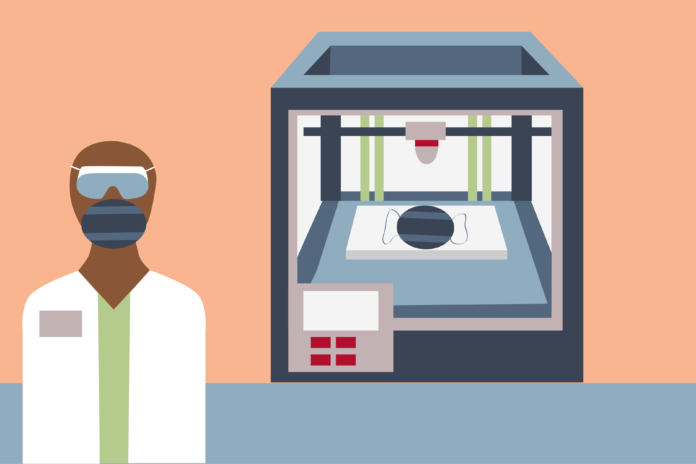Researchers outside of health field also contribute to minimizing problems posed by coronavirus
In addition to efforts by the UC Davis Medical Center and other university health facilities, UC Davis engineers have been working to address problems related to the COVID-19 pandemic. These efforts include manufacturing alternative personal protective equipment (PPE) to use in instances where traditional PPE is not accessible, according to Steven Lucero, a development engineer and manager of TEAM and 3DPrintViz labs.
In his laboratory, Lucero is currently attempting to adapt off-the-shelf, commercially available gear in order to manufacture emergency PPE. Although he did try to create fully 3D-printed alternatives, he found that these models would not be safe in the long-term and could not be used properly. The main purpose of his research is to have usable PPE if facilities run out of traditional ones — but he hopes his gear will not have to be used, as manufacturing facilities increase their supply of PPE.
“I would say that 3D printing, while not specifically well suited for this climate, does have a purpose in this current situation,” Lucero said via email. “While it’s unlikely I could furnish the necessary supplies to satisfy our entire local healthcare system (my facilities and my equipment are not set up for this kind of scale), there are creative ways in which I can at least prepare emergency backup supplies, or fill partial shortages (specifically, in the case of clear face-shields).”
Many other engineering researchers, as well as researchers in other fields, are collaborating with each other as well as with medical facilities to contribute to growing COVID-19 research. To facilitate such collaboration, the Office of Research has launched the COVID-19 Research Working Group, led by Prasant Mohapatra, the vice chancellor for research and a distinguished professor of computer science. Although this group started organically as a Slack channel, the need for more structured collaboration grew as more people joined the group.
“There was a lot of energy and excitement shared in the COVID-19 research group in order to collaborate and look for opportunities and how to find solutions related to testing, treatment, vaccines and diagnostics,” Mohapatra said.
UC Davis faculty within the group have recently announced their opportunity to submit short proposals in order to receive seed funding to continue their studies. With this funding, in addition to providing specimens and facilities for research, Mohapatra hopes they will be able to produce tangible results in six months, if not sooner.
“As an engineer, I think my role at this point is to listen to clinical input (needs), and attempt to identify engineering solutions to those problems,” Lucero said. “Many different medical supplies are experiencing shortages, and much of my time has been focused on how I might develop and implement alternatives to those supply — but only where it’s safe to do so, and where no other alternative exists.”
Written by: Michelle Wong — science@theaggie.org




